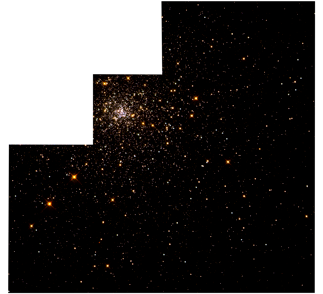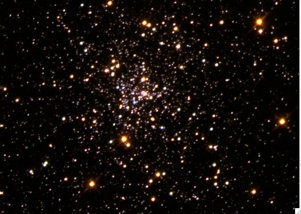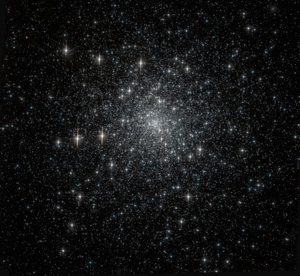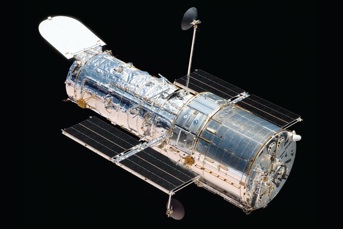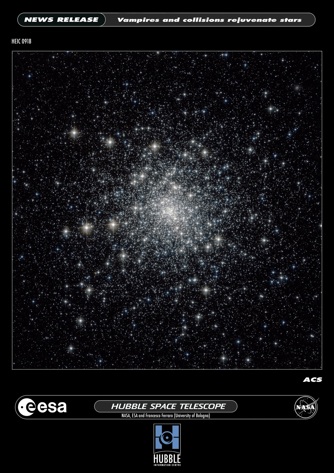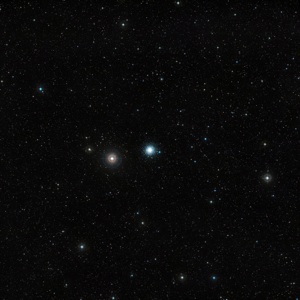Image Gallery
The star cluster M30
This image was obtained by combining a set of multi-filter images obtained with the WFPC2 on board of Hubble Space Telescope. It was used to explore the core of M30 and to discover the two families of “rejuvenated” stars. The field of view is 160 arcseconds across.
Credit: F. Ferraro(UNIBO)
Screensize JPG (3.2MB) mosaic4_tag.jpg
Size TIFF (66.3 MB) mosaic4_tag.tif
The Hubble Space Telescope
The Hubble Space Telescope (HST) is 13.2 meters (43.5 ft.) long and its maximum diameter is 4.2 meters (14 ft.). Its primary mirror is 2.4 meters (94.5 inches) in diameter.
HST orbits Earth every 96 minutes, 575 kilometers (360 miles) above the Earth's surface. Its speed is approximately 8 km per second (5 miles per second).
On August 11, 2008 the Hubble Space Telescope completed its
100,000th orbit.
It is named after the American astronomer Edwin Hubble.
Credit: NASA
Full Size (812 KB) hubble1_tag.jpg
The core of M30
A zoomed view of the nucleus of the cluster M30. The field of view is 30 arcseconds across.
Credit: F. Ferraro(UNIBO)
Full Size TIFF (1.2 MB) m30_core.tif
A global view of M30
This is another image of M30 taken with the Advanced Camera for Surveys (ACS) on board of Hubble. The field of view is 200 arcseconds across.
Credit:NASA/ESA
Normal Size TIFF (1.3 MB) m30_acs.tiff
Full Size TIFF (33.2 MB) heic0918a.tif
Zooming in on Messier 30
Zooming in on Messier 30, which formed 13 billion years ago and was discovered in 1764 by Charles Messier. Located about 28 000 light-years away from Earth, this globular cluster — a swarm of several hundred thousand stars — is about 90 light-years across.
Credit:ESA/Hubble
MPEG Movie(6.7 MB) heic0918a.mpeg
MPEG-4 Movie (27.9 MB) heic0918a.mp4
AVI Movie (181 MB) heic0918a.avi
Wide-field view of Messier 30
This wide-field image of the sky around the globular cluster Messier 30 was created from photographs forming part of the Digitized Sky Survey 2. Located about 28 000 light-years away from Earth, this cluster — a swarm of several hundred thousand stars — is about 90 light-years across.
Credit: ESO and Digitized Sky Survey 2
Acknowledgment: Davide De Martin
Full Size TIFF (32.2 MB) heic0918c.tif
Panning over Messier 30
Panning over Messier 30, which formed 13 billion years ago and was discovered in 1764 by Charles Messier. Located about 28 000 light-years away from Earth, this globular cluster — a swarm of several hundred thousand stars — is about 90 light-years across.
Credit:ESA/Hubble
MPEG Movie (2.8 MB) heic0918b.mpeg
QuickTime Movie (6.4 MB) heic0918b.mov
AVI Movie (76.2 MB) heic0918b.avi
